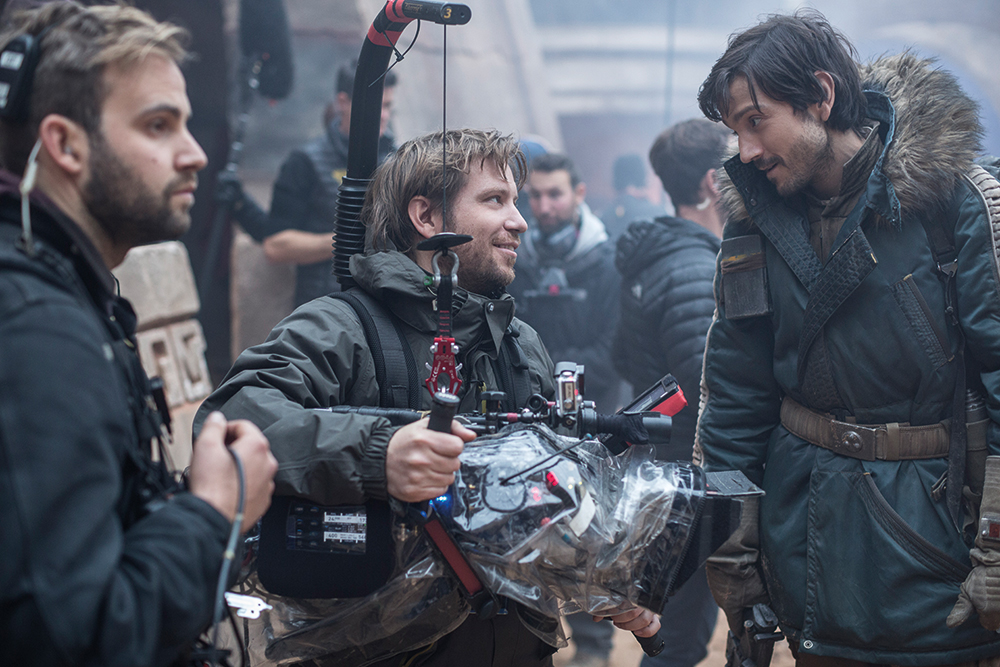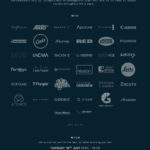
Making of a legend: Arri Alexa 65
This time on Making of a Legend we celebrate a camera that’s intention was to save cinema, but did so much more especially for lovers of medium format imagery
 The Arri Alexa 65 camera was originally conceived as a plate camera for VFX
The Arri Alexa 65 camera was originally conceived as a plate camera for VFX
The Alexa 65’s arrival on the Arri Rental camera list piqued the interest of some major DOPs, including Emmanuel ‘Chivo’ Lubezki who was one of the first to call Arri to get a camera.
“When the camera was announced, we immediately got a couple of calls,” says Andrew Prior, head of Cameras and Digital Systems at Arri Rental UK. “One of them was from Chivo and he said that he would test a camera for us. He was shooting The Revenant and wanted one on set. We, of course, said yes but kept in mind that it was -25˚C and snowing in deepest Canada and he had a prototype.”
“That Arri sensor has a beautiful filmic response to light in how it rolls off hightlights”
The other interest came from Robert Elswit who was shooting Mission: Impossible – Rogue Nation. “He was doing an underwater sequence with Tom Cruise that involved Tom holding his breath for a long time. They were doing it in a tank and there was going to be a lot of CGI, so he wanted to use the 65 format’s resolution to be able to reframe,” explains Prior. “They could shoot Open Gate and then they could punch in and move around. Also the VFX team would be happy about the resolution.
“There is a famous shot in the [Revenant] of Leo walking in this massive area and he is just this small speck. He [Lubezki] realised that he had a camera that is not only for the physical landscape of the Earth, but the facial landscape.”
Bradford Young, DOP on Solo describes it as ‘exploring the landscape of the face’.
Greig Fraser ASC, ACS
DOP Rogue One: A Star Wars Story
“At the time I was doing two films, Lion and Rogue One. Lucasfilm knows what it is doing well in advance and has lots of time for development and preparation,” Fraser says. “So back in late 2014, as Star Wars: The Force Awakens was wrapping up post-production, we had the good fortune to use some of their sets. The general consensus was that we were going to go film, because that’s how the originals were shot. Director J J Abrams had just been very successful with it on the previous movie.
But lhe look isn’t just for big films. “I’ve used this format, the Alexa 65, on a film called Mary Magdalene. The format is something that I’m quite passionate about. As a filmmaker, I just think we’re entering into this new world of very interesting technology,” says Fraser.
Jess Hall
DOP Ghost in the Shell
“I wanted to imitate the anime’s aesthetic. The medium format by its nature compresses the perspective. Compressed perspective is something that exists in traditional Japanese art and to a certain extent in anime,” explains Hall.
“But also with my own taste I was interested in using wide angles, which kind of echo manga’s feel. I’m not talking about any kind of exaggerated perspective though, so there’s no keystoning or distortion. The Alexa 65 format is also perfect for other formats like IMAX, 3D, HDR and standard 2D projection. The perspective that you can get in 1.85 framing was, as soon as I saw it, the way that I wanted to go.
“A particular type of lens with the limited colour palette added up to something unusual.”

Simon Jori
DIT on War for the Planet of the Apes
“The appeal of the Alexa 65 was obvious: the resolution and ability to create a very rich negative, and the option to play with it in post – to zoom, reframe and do all sorts of directing after,” says Jori. “But the bigger the sensor size or larger the film negative, the shallower the depth-of-field. So, from a technical perspective, it was a challenge.”
He adds: “Honestly, 1280 ISO on the Alexa 65 looks better than 800 ISO on regular 35mm digital cameras. That’s a real bonus, considering some of the medium format lenses that are needed to cover the large sensor area are not as fast as we are accustomed to using. Usually, when one ‘gains up’ a digital camera signal a stop or more, the otherwise insignificant electronic noise, lurking in the shadows and mid-tones of the shot, is exponentially increased. This often results in objectionably coarse and grainy images. With the Alexa 65, the pixels are so relatively small compared to the final frame size, that any increased noise is so fine-grained it has far less apparent effect on the image. We could increase ISO to 1280, 1600, even 2000 if needed, without suffering problematic noise levels.”

Taylor Matheson
DOP Michael Seresin’s first AC on War for the Planet of the Apes
“That Arri sensor has a filmic response to light, both in how it rolls off highlights and in its sensitivity and roundness in the low end,” says Matheson. “It never looks like ‘video’. Michael’s single-source approach to light, combined with his utter fearlessness of the dark side, roots exposures firmly in the lower end of the scale, and leaves a real honesty to the images. They never look lit, but still have an energy.”
Dan Skinner
DIT on Netflix’s Okja
“Everyone really saw it [the effect of the Alexa 65’s 6.5K oversample],” says Skinner. “We used a 4K 50-inch monitor on the set, or in a vehicle near the set, and that’s where we were able to see the full quality. There’s no comparison. So clean and so sharp.”

Newton Thomas Sigel
DOP on Bohemian Rhapsody
“The Alexa 65 is a remarkable camera. It has this giant sensor that delivers exquisite picture detail. Not sharper, just more detailed,” says Sigel. “I don’t care about the number of pixels – I care about their quality. The Alexas are quite large, which allows for this tremendous breadth of colour and dynamic range. They call the camera ASA 800, but I think it is much more than that.”

Pedro Luque
DOP of The Girl in the Spider’s Web
“Arris Alexa 65 had been of interest even before starting prep, because once you put your hands on a medium format [stills] camera and you take some pictures, you fall in love with it,” enthuses Luque. “I love the Alexa sensor and it was just a matter of finding the right lenses for it. There’s no way of going wrong with three Alexa sensors stacked against one another. When you see the footage, it’s incredible how nice it looks.
“What I felt with the 65 was that it’s better to use it in small houses and locations, because you have a better wide lens without distortion. If you need a 12mm on the normal [Alexa] it looks really weird. It’s beautiful if you know how to use it, but if you’re in some other kind of place, it’s difficult to use a 12mm. But the 25mm on the Alexa 65… it’s a very wide lens, though it’s not round, it’s not like you’re looking through the eyepiece in a door. When you’re in a small space, it looks great.”

Neville Kidd
DOP of The Umbrella Academy
“I do love the 65, the size of that sensor is stunning and we were able to use the same lenses as we did with Altered Carbon. These were the Canon Cine Primes and the Cooke S5s, which was a great combination,” says Kidd. “Now fortunately there are more options lens-wise for the Alexa 65, lenses like the Zeiss Supreme lenses, which when we started shooting we couldn’t get hold of. Also, you’ve got the Cooke S7s so we’re getting spoilt for choice now.
“The Alexa 65 camera gives you such a wide scope, giving your lenses a great way to see the world. And it made our operators lives easier, they could see everything but could quickly run out of set. So the benefit of giving them a 360˚ was fantastic for the camera. The Alexa 65 when it moves around the set sees the world in a different way that other cameras just don’t see. Aesthetically it looks stunning and for me you get a kind of beautiful realism moving that camera through The Umbrella Academy world, even though the world was made up.”

IMAGES Behind the scenes shots from Ghost in the Shell, Okja, Altered Carbon, all shot on the Arri Alexa 65 camera, behind the scenes shots from The Girl in the Spider’s Web, Rogue One and a still from War for the Planet of the Apes













